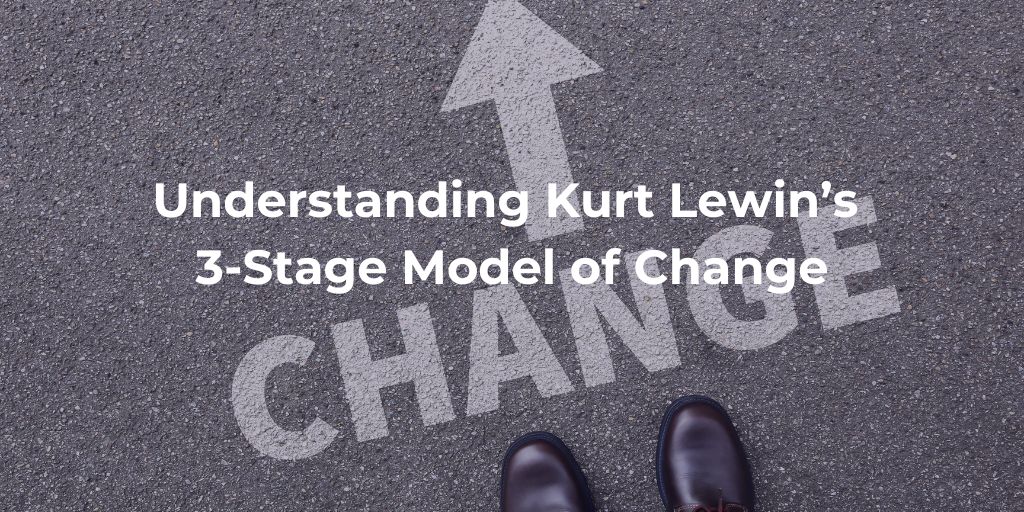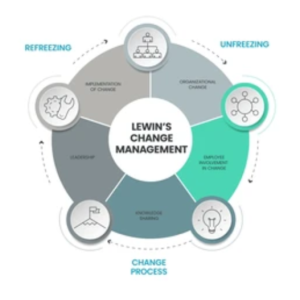Categories
Tags
Newsletter
Subscribe to the QRP International neswletter and get all the news on trends, useful contents and invitations to our upcoming events
Subscribe
At some point in its existence, every business is affected by change. How have your work activities changed over the years? New processes and products were implemented, and new needs have arisen: only the businesses that adopted these changes managed to stay relevant and profitable.
Several models have been used to understand and guide change; in this article, we will focus on one of the cornerstone approaches of Organisational Change Management: Kurt Lewin’s 3-Stage Model of Change. Kurt Lewin is the founder of Social Psychology and is known for his study of group dynamics and organisational development. In the 1940s Lewin theorised the 3-step Model of Change, which described change as a three-step process. The easiest explanation of this theory is given by the analogy of melting a large cube of ice into a cone. The three necessary steps to do so are to:

The first step in Kurt Lewin’s Model is Unfreezing: change breaks the regular workflow and can start from an industry demand or the need to be more efficient or profitable.
The necessary steps for a successful Unfreezing phase are the following:
Conduct an internal analysis to understand what should change and how it can change. This is usually the most difficult step, and it is often done by a consultant, an impartial entity that can objectively analyse the situation.
Obtain the support of senior management. Without it, it is impossible to act on the insights gained during the internal analysis and achieve significant changes to the business activities.
Communicate the vision; it is fundamental to address employee concerns and answer all stakeholders.
Transparency and clear communication of the current situation make change a collaborative process involving employees.
Having a clear vision of the future “desired state” removes uncertainty and helps employees commit to change. They can envision their future work-life and can perceive the benefit that change will bring to them.
Identify the “driving” and “resisting” forces of change. They could be structural or related to resources available. Regarding human resources it is important to mention that each person has a natural tolerance to change: some oppose it relentlessly, others are indifferent to it and some employees facilitate change.
The second step is all about implementing change. Communication from management to all employees is essential. An agile and iterative approach has been proven to be the most effective way to implement change.
Change can require employees to learn a new skill (e.g., a new software, a new tool), it can impact the structures and processes of a business and could also involve changes to a product or service. It is important to remember that these changes affect employees because they will have to find a new balance, a new way of doing things. It is also a time of general uncertainty.
Good communication should be led not only by transparency but also by a genuine effort to bring everyone up-to-speed with new technologies and requirements. This involves demos, FAQs and Q&A sessions to solve doubts regarding the new processes.
Strong leadership can help share the new vision and purpose of the change accepting feedback during the implementation to adjust and maximise effectiveness.
Management must also allocate enough resources – budget, time, training, etc. – to ensure that all is set in place for a successful switch towards the new standard. Overall, resistance should be appropriately addressed, not only with good communication but also with support.
Finally, helpful to the implementation of any internal change is the identification of Change Agents: employees who are more likely to accept change and implement it in their activities.
The final step of Kurt Lewin’s Model is Refreezing: bringing back structure and stability to consolidate change. After employees have assimilated the new processes and routines, it is time to reward those who have adapted faster and give incentives to others. The Refreezing stage is important because it brings closure to the most intense phase of change and allows employees to familiarise themselves with the new processes and their new way of work
This Refreezing step is a time of careful monitoring and feedback. Most employees will fall back on their old ways of working. During those moments the Change Leader must address the situation, by understanding why the employee resorted to their old habits.
The Change Leader must comprehend the reasoning behind that decision in order to provide an explanation on why that process is either less efficient or not in line with how all the other processes are now handled.
This step is also the perfect time to reward the employees that changed their work behaviours. This practice has a two-fold benefit: employees will feel rewarded for aligning themselves with the new work environment, and those who have not embraced change will feel compelled to do so.
Change can be an amazing opportunity or a powerful threat to any business. Change Management principles and methods can guide companies during this challenging journey, allowing them to grow and reach higher standards. Kurt Lewin’s 3-Steps Model of Change is an important, historic approach that summarises how change can be achieved. However, more frameworks and techniques on how to integrate changes in your business can be learnt during Change Management courses.
If you want to learn more about the impact of Organisational Change Management, read our blog “How effective organisational Change Management can impact your employees”.
QRP International is an ATO (Accredited Training Organisation) for Change Management courses and offers both a Foundation and a Practitioner level. If you want to learn more check our Change Management website page or contact us!
Source:
“The Effective Change Manager’s Handbook” By Richard Smith, David King, Ranjit Sidhu and Dan Skelsey, © the APM Group Limited